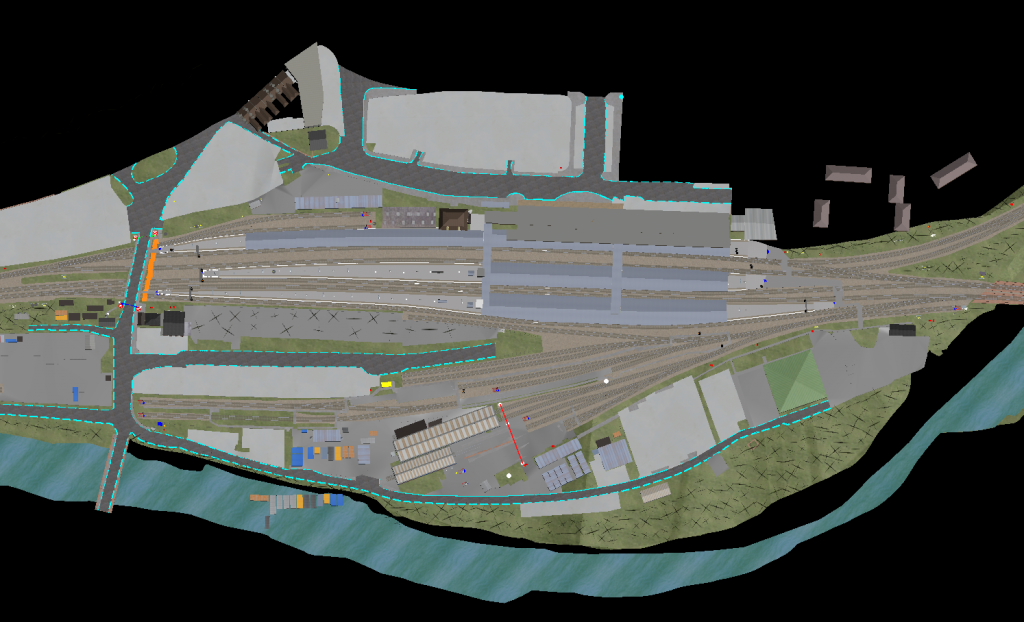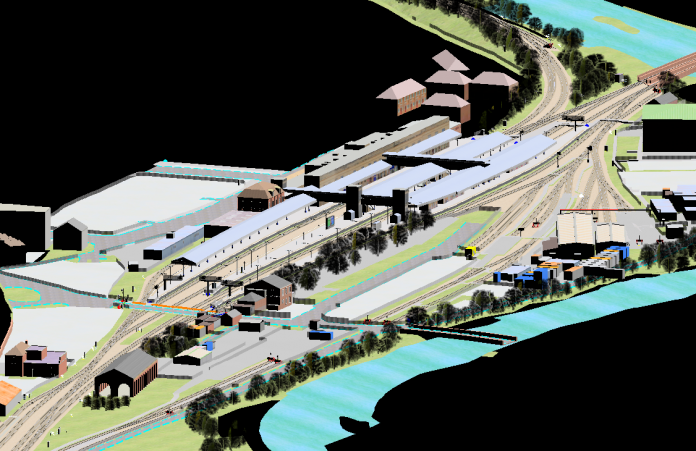Steve Cockerell, industry marketing director for transportation at Bentley Systems, discusses how digital twins are reimagining the future of transport
By 2050, the world’s population is expected to increase by about 2 billion people, from 7.9 billion to 9.7 billion. While growth rates vary greatly across different regions, in the eyes of the United Nations, the future of the world’s population is most definitely urban.
Around 84% of the UK currently lives in urban areas. A combination of a growing population and increased urbanisation is placing a huge amount of strain on the infrastructure assets that support nearly every aspect of life.
It is our roads and railways that will be most affected, as, for the foreseeable future, these critical networks are the only way to keep our cities and country moving.
Our future must be more sustainable
Around 70% of the world’s carbon dioxide (CO2) emissions can be traced to infrastructure. Every infrastructure asset, large or small, has a carbon impact when it is built – through the design, materials, and construction methods we adopt, but also throughout their operational life, through the carbon-heavy behaviours that they support.
With figures from the International Energy Agency (IEA) indicating that transport accounts for around one-fifth of all global CO2 emissions, it is road vehicles that account for three-quarters of the 8-billion-ton total number.
Almost half of this number (45%) is you and me, as passenger movement that includes cars, motorcycles, buses, and taxis are the main culprit. At the other end of the scale, rail and transit emits very little – just 1%.
So, who’s problem is it? Rachel Skinner, the current president of the UK’s Institution of Civil Engineers, recently said, “There is no path to delivering net-zero by 2050 that doesn’t run through de-carbonising transport. Significant reductions in carbon emissions need to start now.”
While it requires political and economic support, as well as social change, it is the professionals that design, build, and operate the world’s infrastructure that has the greatest potential to make the changes necessary – to reimagine the future of infrastructure for a better tomorrow.
Make change part of your strategy
Something we cannot ignore is the effect of Covid-19.
Rail networks and stations turned into ghost towns, with our streets all but deserted during lockdown restrictions. The projects that we worked on changed, with adjustments to project schedules and, in extreme cases, complete cancellation.
The pandemic will also change the way that assets are operated in the future, requiring new processes to be adopted to ensure that the trust of passengers is restored, helping people feel safe to return to public transport, their offices, and public places.
Despite all the negatives, the changes forced by Covid-19 have also created new opportunities, and I believe that they should be used as a catalyst to change businesses for the better.
Many now expect that working from home will form part of a better work-life balance, with communication and collaboration tools like Microsoft Teams, Zoom, and our own ProjectWise becoming increasingly important.
The global pandemic has been a wake-up call, forcing us to recognise that change happens and we sometimes have no power over it.
I believe that the experience of the last year-plus has shown what we can do when change is non-negotiable. However, it is also an indicator of the level of opportunity that change provides if it is part of the strategy for delivering better business outcomes versus a reaction to challenges encountered.
Reimagining the new normal of transportation
As McKinsey states in its May 2020 report ‘How Construction Can Emerge Stronger After Coronavirus‘, “Now is the time to start reimagining our industry and how organizations can emerge in the next normal from a position of strength.”
We have to find safe, sustainable ways of overcoming the challenges that we encounter in what is a very complex industry. In the short term, those ways include increased digitisation, remote working, and a greater reliance on BIM – advancing it to include 4D and 5D simulation to re-plan and optimise project schedules.
Digital twins are also identified as a means of reimagining the way we design, build, and operate infrastructure assets through their ability to provide real-time feedback and insight into decision-making processes.
Longer-term, McKinsey sees the case for digital tools already proven to increase productivity becoming even stronger, an acceleration in the uses of automation across the design and construction phases. It includes the increased use of offsite construction, where working in more easily controlled environments makes it easier to keep people safe and drives up quality.
At Bentley Systems, we believe that there is a lot that we can do to help deliver this evolution of the transportation industry, especially through the use of advanced digital technologies to support activities across the lifecycle of infrastructure assets.
Some examples might be by enabling smarter decisions that help target project investment, optimise design, enable the use of different materials or methods of construction, save money, and increase safety. The bottom line is that the decisions that infrastructure professionals are making today really do matter for a better tomorrow.

Data-driven decisions with digital twins
Through digital twins, the way that we design, build, and operate infrastructure has evolved, along with how the professionals involved make decisions and, in turn, the possible outcomes.
Responsible for the railway network serving the communities and businesses of Wales, the Thames Valley, West of England, and the South West Peninsula of the UK, the focus of Network Rail’s Wales and Western Region (NR WW) is to provide a safe, reliable, and high-performing railway for its passengers every day.
NR WW wanted an innovative way to meet these goals, which became more important than ever when the Covid-19 pandemic turned the usual way of working on its head. As a result of the national lockdown in the first half of 2020, despite the UK government designating rail professionals as key workers, they needed agile digital transformation and strong teamwork to overcome the day-to-day challenges that they faced in the evolving new normal.
One project where movement restrictions impacted the team’s traditional way of working was at Exeter station. Without the ability to engage in face-to-face meetings with the development team, zero familiarity with the location, and limited information from which to produce a viable result, NR WW’s team needed to model the station in 3D for the purposes of signal sighting.
Using a combination of Bentley applications, the team took just three days to create a visually and technically accurate digital twin of the station. Its digital workflow began with gathering and referencing all the information they had available, including LiDAR and point-cloud data. The process continued with the creation of a digital terrain model, which included further detail added and verified using point-cloud data.
“Network Rail aims to be at the forefront of digital twin development,” said John Nolan, programme manager BIM at Network Rail.
“Bentley technology has enabled Network Rail to capture the real-world state of a project and mirror it in a virtual world, creating a digital twin of Exeter Station that, in addition to addressing the requirements of the project for which they were first conceived, provides a valuable digital record of assets we can utilise for many other projects in the future, reducing the need for further site visits, inevitable delays, and unnecessary cost.”
The fast and efficient creation of this digital twin for signal sighting proved that even during a global pandemic and resultant lockdown, it was possible for NR WW to provide services that go above and beyond the expectations of its clients and stakeholders.
Through infrastructure digital twins, the future of transportation is very much being reimagined today, delivering a better tomorrow for everyone.










![[VIDEO] HS2 completes 4,600-tonne viaduct slide across M6 The HS2 team completed a 17-hour long operation sliding the viaduct structure across the M6 without closing the motorway](https://www.pbctoday.co.uk/news/wp-content/uploads/2025/12/M6-South-viaduct-slide-taking-place-across-a-live-motorway-December-2025-218x150.jpg)



